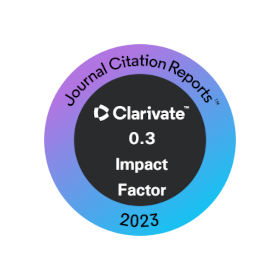Most read articles by the same author(s)
- Vinisa Saynes Santillán, Jorge D. Etchevers Barra, Fernando Paz Pellat, Leonardo O. Alvarado Cárdenas, Emisiones de gases de efecto invernadero en sistemas agrícolas de México , REVISTA TERRA LATINOAMERICANA: Vol. 34 No. 1 (2016)
- Francisco Matus, Estrella Garrido, Claudia Hidalgo, Fernando Paz Pellat, Jorge D. Etchevers B., Carolina Merino, Aurelio Báez, Saturación del carbono en las partículas de limo y arcilla en suelos con mineralogía contrastante. , REVISTA TERRA LATINOAMERICANA: Vol. 34 No. 3 (2016)
- Yunuen Bolaños González, Martín A. Bolaños González, Fernando Paz Pellat, José Ignacio Ponce Pulido, Estimation of carbon stored in fir and cypress forests in Texcoco, State of Mexico. , REVISTA TERRA LATINOAMERICANA: Vol. 35 No. 1 (2017)
- Fernando Paz Pellat, Jesús Argumedo Espinoza, Carlos O. Cruz Gaistardo, Jorge D. Etchevers B., Ben H. J. de Jong, Distribución espacial y temporal del carbono orgánico del suelo en los ecosistemas terrestres de México. , REVISTA TERRA LATINOAMERICANA: Vol. 34 No. 3 (2016)
- Julio Cesar Rodríguez, Fernando Paz Pellat, Christopher Watts, Carlos Lizárraga Celaya, Enrico Yépez González, Guillermo Jiménez Ferrer, Alejandro Castellanos Villegas, Cesar Hinojo Hinojo, Carlos Eduardo Macías Vázquez, Methane and carbon dioxide measurements using the eddie covariance technique in semi-stabled dairy cattle in Sonora, Mexico. , REVISTA TERRA LATINOAMERICANA: Vol. 37 No. 1 (2019)
- Fernando Paz Pellat, Estimación de la concentración foliar usando parametrización directa albedo/absortancia de hojas. , REVISTA TERRA LATINOAMERICANA: Vol. 32 No. 2 (2014)
- Fernando Paz Pellat, Relative atmospheric corrections of satellite images: multiple invariant patterns and inversions , REVISTA TERRA LATINOAMERICANA: Vol. 36 No. 3 (2018)
- Fernando Paz Pellat, Jorge D. Etchevers Barra, Distribución a profundidad del carbono orgánico en los suelos de México. , REVISTA TERRA LATINOAMERICANA: Vol. 34 No. 3 (2016)
- Fernando Paz Pellat, Martín Bolaños, Fermín Pascual Ramírez, Jesús Escamilla, Mario Cuesta, José Inés Zuñiga, Mexican experience on the design of catastrophic satellital parametric livestock insurances: operational implementation , REVISTA TERRA LATINOAMERICANA: Vol. 36 No. 2 (2018)
- Fernando Paz Pellat, Eliezer López Bautista, Ma. Isabel Marín Sosa, A validation exercise of the precipitation-runoff expolinear model using a rain simulator. , REVISTA TERRA LATINOAMERICANA: Vol. 35 No. 4 (2017)
















